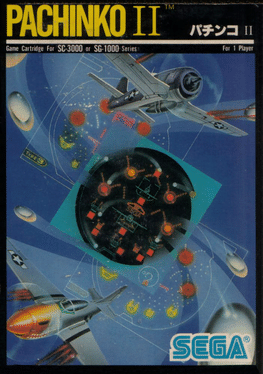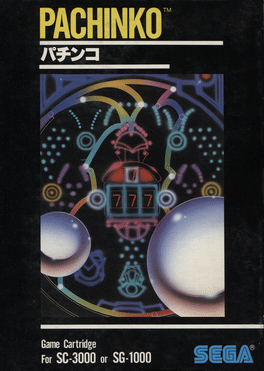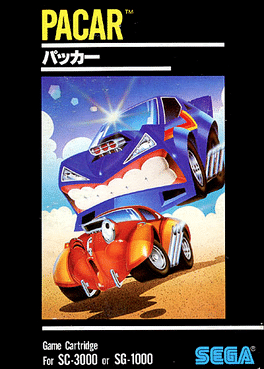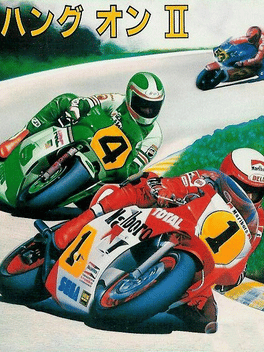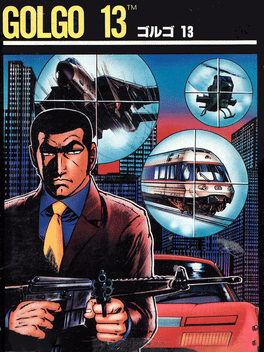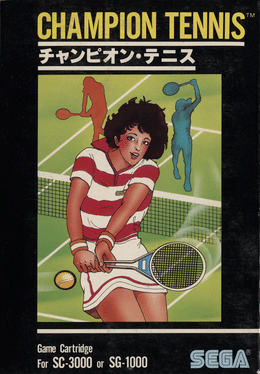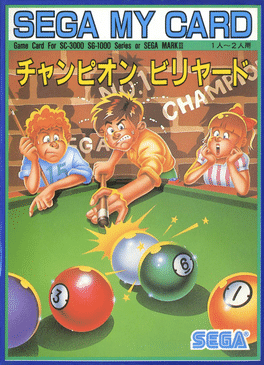Most Popular Sg 1000 Games - Page 3
-
Pachinko II
1984
-
Pachinko
1983
Pachinko
1983
Press 1 on the alpha-numeric keyboard. A giant Pachinko game appears on your TV. You and your opponent are at the lower part of the screen. The digital readout scoreboard will appear at the bottom of the screen when play begins. The left hand control maneuvers the player at the left. The right hand control maneuvers the player at the right. Push the joystick left to go left. Push it right to go right. You can play another person or the computer. To signal the computer you're in the game, press the action button or move the joystick of your hand control in any direction. If the computer does not get a response from either of the hand controls, it will play by itself. Each of the players on the screen has an energizer. Press the action button to flip up your energizer and hit one of the balls. When you hit the ball with your energizer, it will change to your color and rocket back into play. If your energizer is completely raised when it hits, the ball will continue its same horizontal direction. If you -
Pacar
1983
Pacar
1983
Pacar is an SG-1000 game initially released in 1983. It is essentially a mix between two Namco games; Pac-Man and Rally X. It is the sequel to Head-On, which was released a year before Puck-Man. However, Pacar is more-so a clone of Puck-Man than a true Head-On sequel. The player controls "Pacar", a "mischievous" green car through a maze of roads. The objective of the game is to "delete" all of the small red "dots" scattered around the playfield, building up points for a high score. The joystick allows Pacar to move in the proposed direction, assuming it is possible to do so. Like Pac-Man, Pacar does not stop moving unless it hits a wall, however unlike Pac-Man, it is not possible to rotate 180 degrees on the spot - moving in the opposite direction causes Pacar to reverse, and reversing is significantly slower than driving normally. Ideally the player should plan his or her route to avoid reversing altogether. 1 or 2 allows Pacar to move faster across the board. Driving off the edge of the screen makes Paca -
Orguss
1984
Orguss
1984
Orguss is a shoot-'em-up game developed and published by Sega for the SG-1000. In the game, the player takes control of a robot which can transform into a starship. It is based on the science fiction anime series Super Dimension Century Orguss. The player can swap between robot and starship modes freely, though both come with their own set advantages and disadvantages. In robot mode, you are able to destroy ground targets and have greater freedom across the screen at the expense of being a bigger target for enemies. You can shoot rapidfire, but move slower. In starship mode you cannot destroy ground targets, but are less likely to be destroyed thanks to the smaller surface area of the ship. You can move faster, but cannot shoot rapidfire. 1 switches between the two forms and 2 shoots. Orguss had a spiritual sequel in the form of TransBot, released for the Sega Master System in 1985. -
Loretta no Shouzou: Sherlock Holmes
1987
Sherlock Holmes: Loretta no Shouzou is an Adventure game, developed and published by Sega, which was released in Japan in 1987. -
Home Mahjong
1984
Home Mahjong
1984
Mahjong is a game that originated in China. It is commonly played by four players (with some three-player variations found in South Korea and Japan). Mahjong is a game of skill, strategy, and calculation and involves a degree of chance. The game is played with a set of 144 tiles based on Chinese characters and symbols, although some regional variations use a different number of tiles. In most variations, each player begins by receiving 13 tiles. In turn players draw and discard tiles until they complete a legal hand using the 14th drawn tile to form four groups (melds) and a pair (head). There are fairly standard rules about how a piece is drawn, stolen from another player and thus melded, the use of simples (numbered tiles) and honours (winds and dragons), the kinds of melds, and the order of dealing and play. However there are many regional variations in the rules; in addition, the scoring system and the minimum hand necessary to win varies significantly based on the local rules being used. This game is the digit -
Hang-On II
1985
Hang-On II
1985
Hang-On II is an SG-1000 sequel to the critically acclaimed Hang-On. Despite the name, the game is meant as a direct sequel to the Mark III version of Hang-On, and is virtually identical to that game. The only difference is downgraded graphics and the addition of music from the arcade version. Meanwhile, Super Hang-On is the direct sequel to the arcade game. It is compatible with the BH-400 bike handle controller, and would be the only SG-1000 game designed for it (though the peripheral is compatible with the Sega Master System and Sega Mega Drive). -
Golgo 13
1984
-
Dragon Wang
1985
Dragon Wang
1985
Inspired by the arcade classic Kung-Fu Master, Dragon Wang (ドラゴン・ワン) is an action game for the SG-1000. You play as Wang (Chinese for "King"), a Kung-Fu master (inspired by Jackie Chan or his character, Thomas), and must kick other men across four stages. This is the prequel to Kung Fu Kid for the Sega Master System. -
Champion Tennis
1983
-
Champion Golf
1983
-
Champion Billiards
1986
Champion Billiards
1986
Champion Billiards is a simplistic billiards game built for the SG-1000. It is the second game in Compile's "Lunar Pool" series. It was not released outside of Japan. Unlike the other Champion Sports games, Champion Billiards is not an accurate representation of it's sport. Instead, Champion Billiards is a level-based physics game. The goal of each level is to use the red cue ball to sink the other balls. Trivia: Breaking open the yellow ball can release a yellow Flicky.
